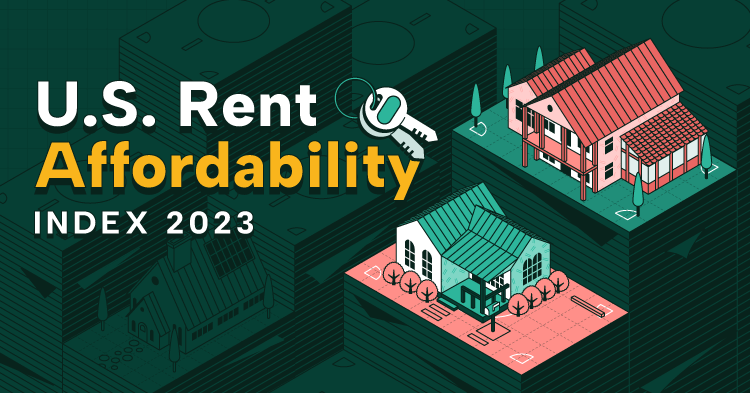For over 40 years, U.S. housing authorities have defined affordable housing as that which costs 30% or less of the inhabitant’s income. It’s a figure that experts still recommend.
But according to real estate insiders, finding a place that costs less than 30% may take a bit more work than it did just a few years ago. There are now 3.9 million fewer affordable rental homes than in 2013, according to the Harvard Joint Center for Housing Studies’ latest State of the Nation’s Housing report. Low rental vacancy rates are exacerbated by record-low numbers of homes for sale. A recent report from Moody’s Analytics found that for the first time in over 20 years, the average American now pays more than 30% for their home.
Since both wages and rental rates vary from city to city, it may be easier to find an affordable home in one location than another. By balancing local average salaries against local average rental prices, CashNetUSA has determined the affordability of renting in over 200 key U.S. cities. We can now present the 20 cities with the highest and lowest proportion of affordable housing and the 20 cities where the average earner can get the most and least space for their money.
What We Did
CashNetUSA used rental price data from Zillow.com and compared it to city salary data to calculate the percentage of properties available to rent for 30% or less of the local average wage and the cities where you can rent the highest and lowest average square footage with 30% or less of the local average salary.
Key Findings
- Hartford, Connecticut, is the U.S. city with the most affordable rental properties: 96.77% of rental properties are available for 30% or less of the average local salary.
- Miami, Florida, is the U.S. city with the least affordable rental properties: just 7.77% are available for 30% or less.
- Renters on the average wage in Montgomery, Alabama, get the most space for their money: 1,359 square feet on average.
- Renters in Santa Ana, California, get the least space for the average wage: 473 sq ft on average.
Hartford, Connecticut, Has the Highest Proportion of Affordable Rentals; Miami the Lowest
First, we looked at the cities with the highest and lowest proportions of properties that can be rented for 30% or less of the local average salary. The cities with the most affordable properties tend to be in the Midwest, while those with the fewest are mostly in coastal states — although there are multiple cities from Arizona, Nevada and Texas among the 20 least affordable. Each dot in the graphs below represents one percent of the rentals in each respective city.
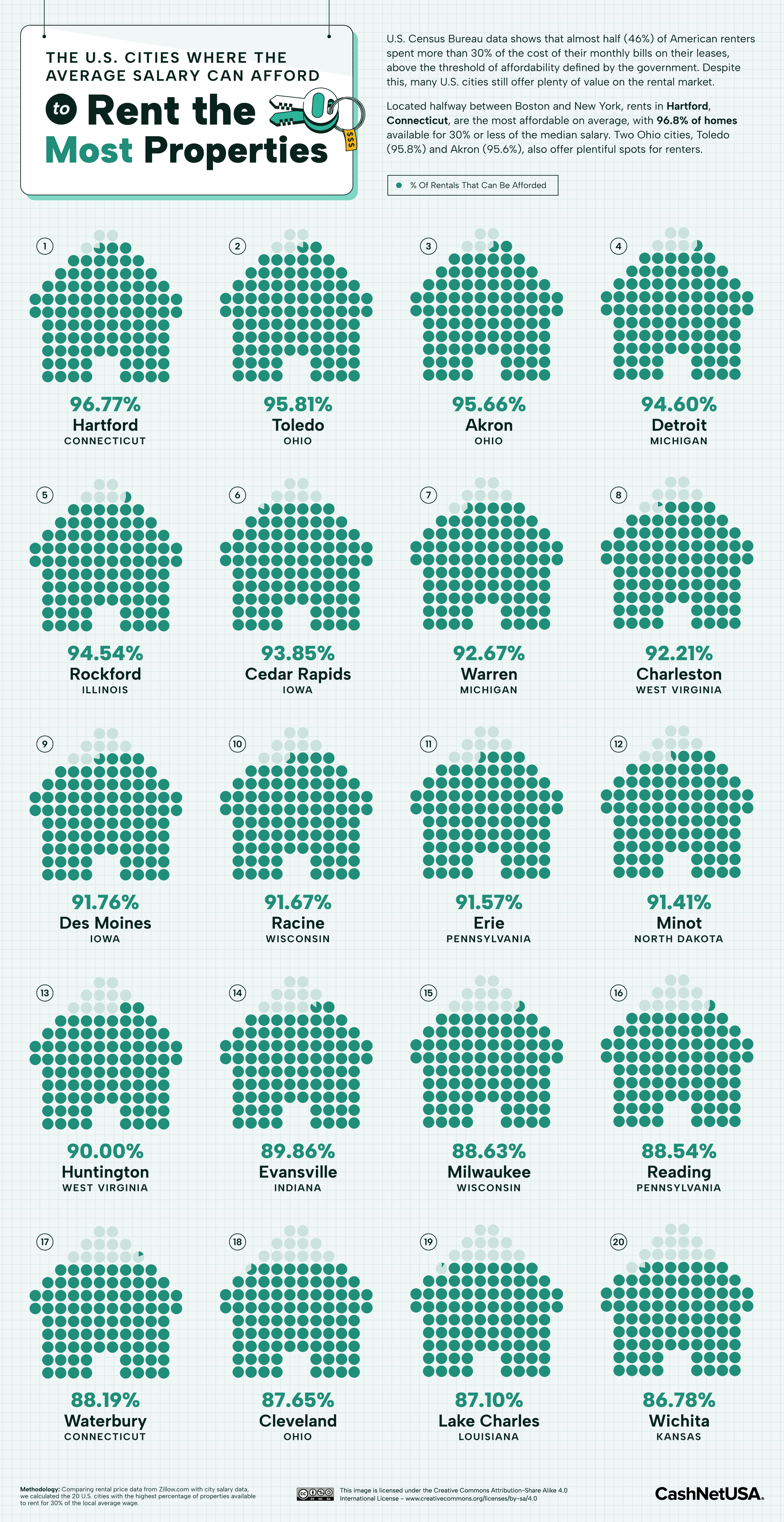
Click here to see the image in full size
The city of Hartford, Connecticut, enjoys one of the highest average salaries in the land. Connecticut is traditionally known as a high-earning state, and Hartford ranks 16th for average earnings out of the 201 cities in our study. More than 96% of the Hartford properties available to rent at the time of data collection cost 30% or less of the average local income, which sits at $83,000 per annum. While this makes Hartford the city with the highest proportion of affordable rentals in the U.S., it defies the pattern that follows it: mostly Midwest states with distinctly lower-than-average incomes but a better choice of low-rent properties.
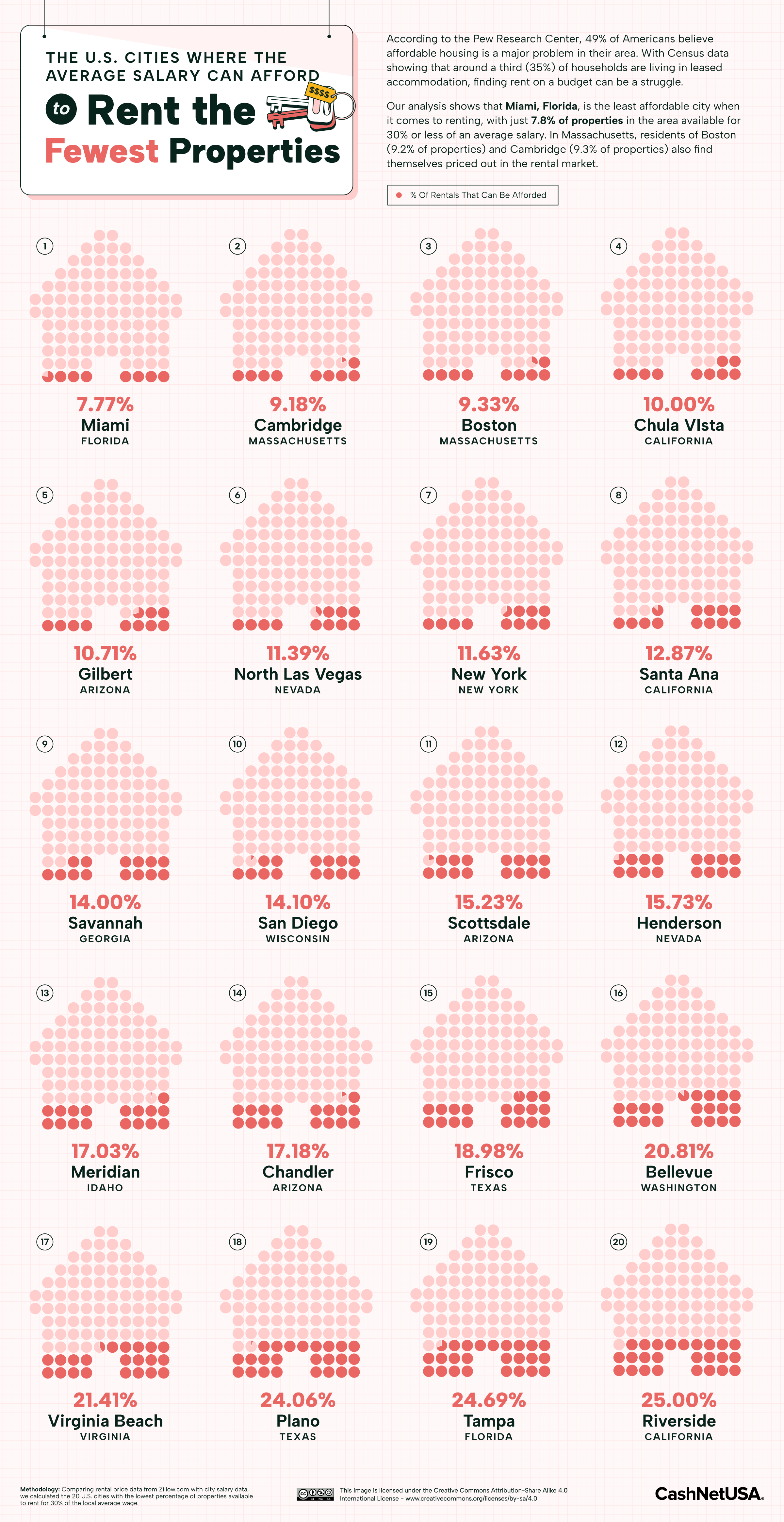
Click here to see the image in full size
Miami and the Massachusetts cities of Cambridge and Boston make up the three cities with the fewest affordable rentals. The average salary in Miami is 25.5% lower than that in Cambridge. In Cambridge, high salaries and high demand (driven partly by “a very finite amount of space,” according to city councilor Burhan Azeem) are at play. In Miami, the situation is exacerbated by some of the most profound wealth inequality in the U.S. — the New York Times has argued that there has been little incentive for developers to cater to lower-income renters.
The Roomiest Homes Per Dollar Are in Montgomery, Alabama
Next, CashNetUSA calculated the average size of the home you could rent with 30% or less of the local average salary in over 200 of America’s biggest cities. Here are the 20 largest and 20 smallest average homes that we found using this metric.
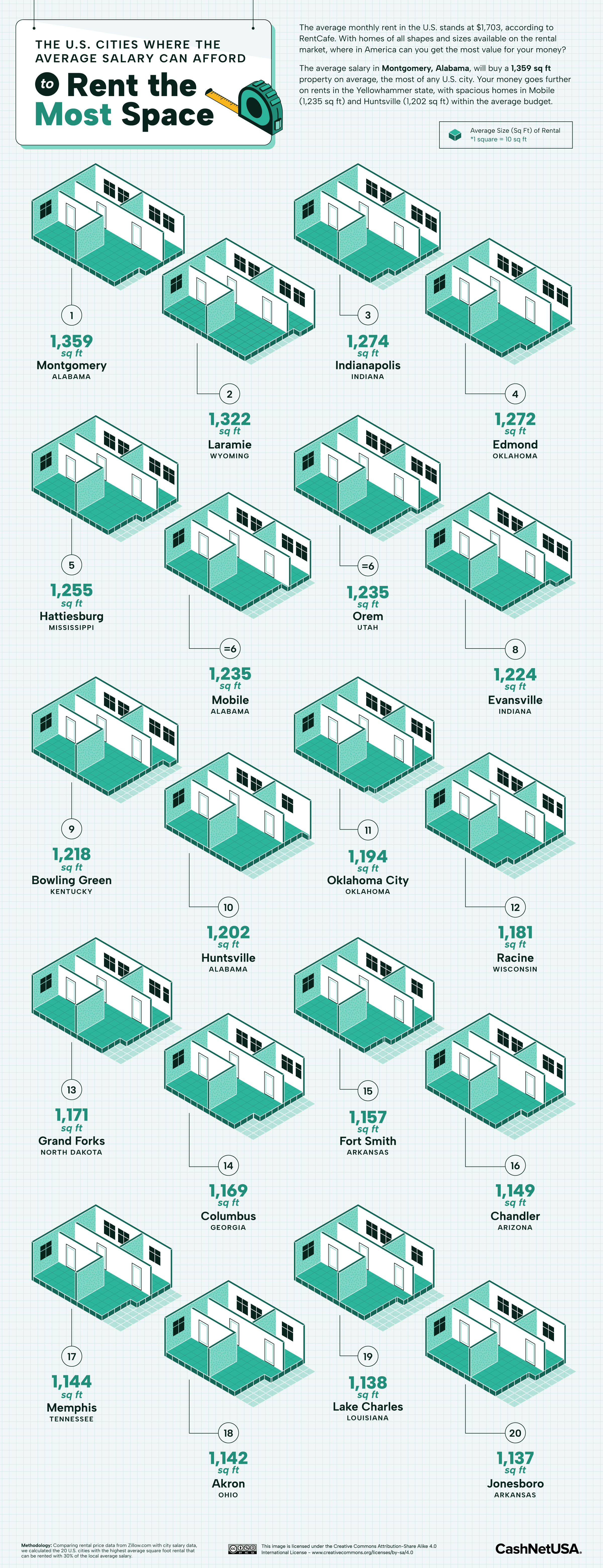
Click here to see the image in full size
Montgomery, Alabama, is flourishing at the moment. And, although the average local salary is far from the highest in our study, a single-earner household on the average wage can secure a rental of 1,359 sq ft without trouble (by way of visualization, Monica’s apartment in Friends was around 1,500 sq ft). Low annual real estate taxes may play a role in keeping roomy homes available to rent for mid-range earners in this city.
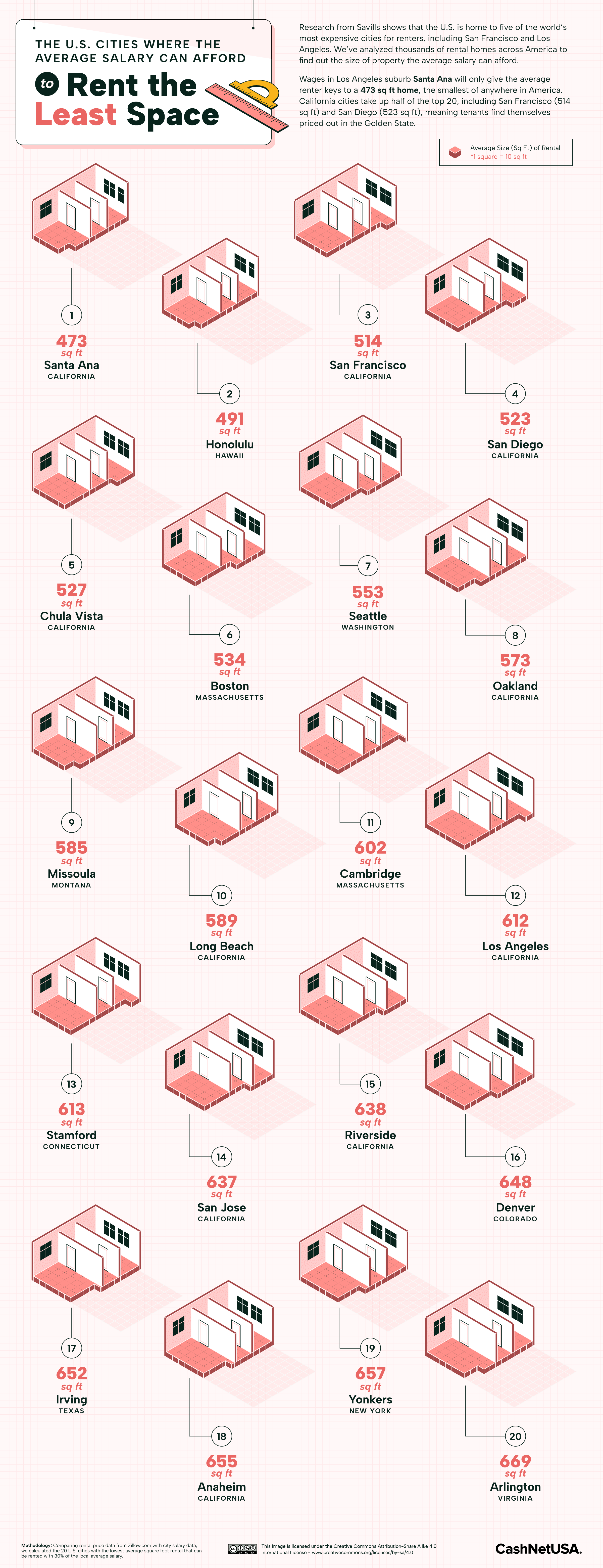
Click here to see the image in full size
Californian cities account for 10 out of the 20 locations where the average earner gets the least square footage for their money. The six smallest average homes — which also include those in Honolulu and Boston, MA — are all around 500 sq ft, which is the size of “a typical studio or one-bedroom apartment,” according to Apartment List. Santa Ana, California, is the city with the smallest offering for the average salary. The city has recently implemented tighter rent control, among other measures, to improve the home security of regular renters.
Budgeting for Life
The 30% or less rule is a longstanding measure of how much of your salary should go into housing. But from the renter’s perspective, it is a rule of thumb rather than a strict commandment. It is worth remembering that this figure has changed through time (it was just 20% in the 1940s), and the effects of sticking to it will vary with the local and national economy as well as personal circumstances. There are other ways to figure your rent budget into your broader budget, including the 50/30/20 rule, where 50% of your income covers all of your essential needs, including housing but also utility bills, groceries and debt repayments.
And, of course, how closely you stick to the 30% or less ideal may also depend on your local housing market. For an idea of how it compares, you can find the full data from our study in the interactive table below.
METHODOLOGY & SOURCES
For this research, we measured the percentage of properties and the average amount of floor space currently available to rent in U.S. cities for people at 30% or less of the area’s average monthly salary. According to the U.S. Department of Housing and Urban Development, rent affordability is calculated at 30% of gross income.
We sourced the average base salary ($) of U.S. cities focusing on the 100 most populated cities in the country, plus the five most populated cities from each state.
Using Zillow.com, we then counted how many rental properties per city were listed at a monthly price equivalent to 30% or less of a city’s monthly gross salary, plus what the average floor space (square feet) was of these rental listings.
The number of rental properties available per city was converted into a percentage score per city.
Data for this research is correct as of August 2023.
